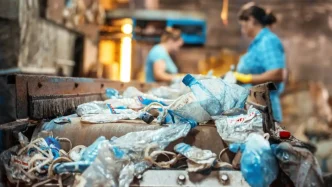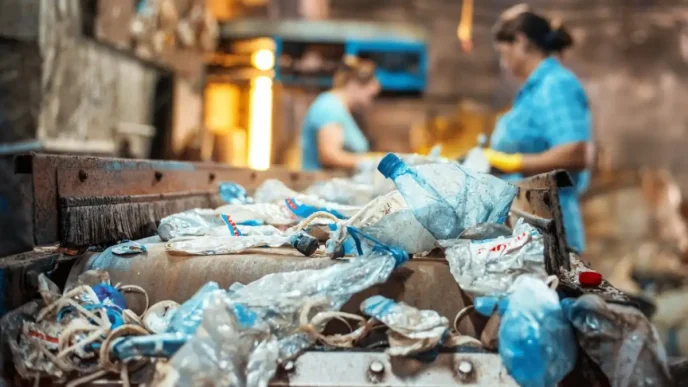In the wake of a devastating magnitude 7.7 earthquake that struck central Myanmar on March 28, 2025, killing over 1,600 people, the Philippines has been confronted with a sobering reality: the nation is not yet ready to face a disaster of similar magnitude. The Office of the Civil Defense (OCD), tasked with preparing the archipelago for natural calamities, has issued a candid assessment of the country’s vulnerabilities, highlighting critical gaps in infrastructure resilience and public readiness.
Two Levels of Preparedness, Both Lagging
OCD Administrator Undersecretary Ariel Nepomuceno delivered a blunt message during a radio interview on Radyo 630 on March 31, 2025. “We cannot sugarcoat the answer; we need to double the time because we have two levels of preparation” he stated, addressing the nation’s readiness for a major earthquake. Nepomuceno outlined a dual approach to disaster preparedness: the immediate, individual response of “duck, cover, and hold” during a quake, and the far more critical, long-term need for engineering solutions to ensure buildings, homes, bridges, and other structures can withstand intense ground shaking.
While the “duck, cover, and hold” drill is widely taught as a reactive measure, Nepomuceno emphasized that it is merely a stopgap. The real challenge lies in the first level of preparation—ensuring that the nation’s infrastructure is robust enough to endure a high-magnitude quake. “Are the establishments, houses, structures, and bridges strong enough to sustain the ground shaking caused by an earthquake?” he asked, pointing to a systemic issue that remains largely unaddressed across the Philippines.
A Regional Wake-Up Call
The recent Myanmar earthquake, which left countless others buried under rubble alongside its staggering death toll, has reverberated across Southeast Asia as a grim reminder of the region’s seismic volatility. The Philippines, sitting on the Pacific Ring of Fire—a zone notorious for frequent tectonic activity—faces a particularly acute risk. The country experiences thousands of earthquakes annually, most of them minor, but the potential for a catastrophic event looms large.
Historical data underscores the danger. Metro Manila, the sprawling capital region with a population of over 13 million, is especially vulnerable. A 2019 report by PSA Philippines Consultancy Inc., a risk assessment firm, painted a chilling picture: a magnitude 7.2 earthquake striking Metro Manila could result in at least 52,000 deaths and 500,000 injuries. The dense urban environment, coupled with aging infrastructure and informal settlements, amplifies the potential for devastation.
Infrastructure: The Weakest Link
The Philippines’ struggle with infrastructure resilience is not a new issue, but it remains a persistent one. Many buildings, particularly in rural areas and poorer urban districts, are not constructed to withstand high-magnitude earthquakes. Even in Metro Manila, where modern skyscrapers dot the skyline, older structures and shanty towns pose significant risks. Building codes exist, but enforcement is often lax, and retrofitting older constructions is a slow and costly process.
Bridges, roads, and public facilities are also a concern. A major earthquake could sever critical transport links, hampering rescue and relief efforts. Hospitals, schools, and government buildings—key to post-disaster response—may themselves collapse if not built to stringent seismic standards. Nepomuceno’s call for “engineering solutions” is a plea for systemic change, but it comes against a backdrop of limited funding and competing national priorities.
Government and Public Response
The OCD has been working to raise awareness and improve disaster readiness, but progress is uneven. Community drills and educational campaigns have increased public knowledge of basic safety measures like “duck, cover, and hold,” yet many Filipinos remain unaware of the structural risks in their own homes or workplaces. Local governments, often strapped for resources, struggle to conduct regular inspections or enforce building regulations.
On the national level, the government has faced criticism for slow implementation of disaster risk reduction programs. While policies and plans exist—such as the National Disaster Risk Reduction and Management Plan—execution often falls short. Budget allocations for infrastructure upgrades and disaster preparedness compete with other pressing needs, from healthcare to education, in a country where poverty affects millions.
Public sentiment, as reflected in discussions on social media platforms like X, reveals a mix of concern and frustration. Many Filipinos express anxiety about the nation’s readiness, with some calling for greater government accountability. Others share personal stories of past quakes, underscoring the emotional toll of living in a disaster-prone region.
Learning from Neighbors
The Myanmar disaster offers both a warning and an opportunity for the Philippines to learn. Countries like Japan, also located on the Ring of Fire, have invested heavily in earthquake-resistant infrastructure and public education, significantly reducing casualties even during major quakes. While the Philippines lacks Japan’s economic resources, experts suggest that smaller, targeted measures—such as prioritizing the retrofitting of schools and hospitals, or improving local government capacity for disaster planning—could make a substantial difference.
Regional cooperation could also play a role. Southeast Asian nations, many of which face similar seismic risks, have mechanisms like the ASEAN Coordinating Centre for Humanitarian Assistance on Disaster Management (AHA Centre) to share knowledge and resources. Yet, coordination remains a challenge, and national priorities often take precedence over collective action.
Economic and Social Implications
Beyond the immediate human cost, a major earthquake in the Philippines would have profound economic consequences. Metro Manila alone accounts for a significant portion of the country’s GDP, and a disaster there could disrupt commerce, tourism, and foreign investment. Reconstruction costs would likely run into billions of pesos, straining public finances. For instance, rebuilding efforts after Typhoon Haiyan in 2013, one of the deadliest storms in Philippine history, required international aid and years of recovery work—resources that might not be as readily available for an earthquake of similar scale.
Socially, the impact would be equally devastating. Disasters often exacerbate existing inequalities, with the poorest communities suffering the most. Informal settlers, who live in makeshift homes with little to no structural integrity, are at the highest risk of loss of life and livelihood. Displacement, loss of access to education, and psychological trauma are long-term effects that can linger for generations.
The Path Forward
Addressing the Philippines’ earthquake preparedness gap requires a multi-pronged approach. First, the government must prioritize funding for infrastructure upgrades, focusing on critical facilities and vulnerable areas. Public-private partnerships could help bridge the financial gap, incentivizing developers to adhere to seismic standards in new constructions.
Second, public education must go beyond basic drills to include information on structural safety and advocacy for stronger building regulations. Community-level initiatives, supported by local governments and NGOs, could empower residents to assess and improve their own environments.
Finally, the Philippines must strengthen its disaster response capabilities. This includes ensuring that emergency services are well-equipped and trained, and that coordination between national and local agencies is seamless. Pre-positioning relief supplies and establishing clear evacuation protocols could save countless lives in the critical hours after a quake.
As the nation watches the unfolding tragedy in Myanmar, the urgency of these measures becomes impossible to ignore. The question is not if a major earthquake will strike the Philippines, but when—and whether the country will be ready when it does. For now, Undersecretary Nepomuceno’s words serve as both a warning and a call to action, urging Filipinos to confront a threat that could reshape the nation’s future in an instant.














